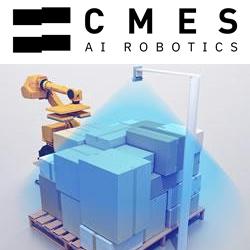Brain Corp Raises $36 Million to Meet Growing Demand for Autonomous Robots
Brain Corp, an AI company creating transformative core technology in the robotics industry, today announced it has raised $36 million in Series D funding to help meet the growing demand for autonomous mobile robots (AMRs) in retail, healthcare, airports, education and other industries now on the front lines of the COVID-19 health crisis. The round was led by returning investor SoftBank Vision Fund 1, and includes new investors ClearBridge Investments, LLC and Satwik Ventures, and an additional investment from Qualcomm Ventures LLC.
"We have always envisioned a world where robots make the lives of people safer, easier, and more productive," said Brain Corp CEO Dr. Eugene Izhikevich. "Autonomous robots are playing a vital role in supporting essential businesses and their workers during this health crisis. This investment will help us continue our pace of innovation and fuel our growth as we execute on the opportunity in front of us."
Original equipment manufacturing (OEM) partners, such as Tennant Company, Nilfisk, Alfred Kärcher SE & Co. KG, Minuteman International, Dane Technologies, UniCarriers Americas and others, license Brain Corp's robotic AI software, BrainOS®, to create autonomous mobile robots that can operate safely in dynamic indoor public spaces. The new funds will be used to further expand Brain Corp's growth into new robotic applications beyond floor care, including inventory delivery, shelf analytics, and other applications that improve employee productivity, reduce costs, and enhance customer experiences. The capital will also be used to support the manufacturing and sales efforts of OEM partners in new markets, such as those in Europe and Asia-Pacific.
"Brain Corp exemplifies the innovative, market leading businesses we seek as partners," said Aram Green, Managing Director, ClearBridge Investments. "World events have brought the value of automation sharply into focus, and we see Brain Corp playing an integral role as market adoption for robotics accelerates."
Retailers significantly ramped up their use of robotic floor scrubbers as the COVID-19 outbreak grew this year, highlighting the strong value that robotics can deliver. Autonomous usage of BrainOS-powered machines in retail locations in the U.S. spiked 13.6% in March 2020, compared to the same month last year, and 13% during Q1 of this year, according to internal network data. In addition, BrainOS-enabled robots are on track to deliver more than a quarter million hours of work over the next 30 days, giving essential workers time back to focus on other important tasks.
Working with OEM partners, Brain Corp has deployed or enabled more than 10,000 robots, one of the largest indoor fleets of its kind operating in public spaces. Customers include several Fortune 500 brands, including Walmart and Kroger, as well as Giant Eagle, C&W Services, Simon Property Group, and dozens of other grocers, retailers, airports, educational institutions, and others.
BofA Securities acted as placement agent for the company.
About Brain Corp
Brain Corp is a San Diego-based AI company creating transformative core technology for the robotics industry. Brain Corp's comprehensive solutions support the builders of today's autonomous machines in successfully producing, deploying, and supporting robots across commercial industries and applications. Named the world's top autonomy solution provider by ABI Research, Brain Corp is funded by the SoftBank Vision Fund and Qualcomm Ventures. For more information, please visit www.braincorp.com.
Comments (0)
This post does not have any comments. Be the first to leave a comment below.
Featured Product

